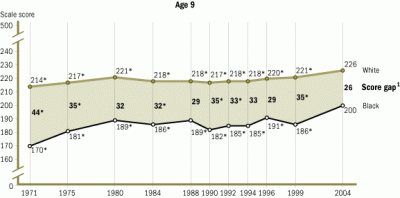The Common Core State Standards, which so far have been adopted by 37 states and the District of Columbia, may seem like a good idea, but new tough standards won’t mean much if students in some states are only expected to learn 30 percent of the material, while students in other states are required to learn 80 percent.
A new study by the American Institutes for Research looks at the wide “expectations gap” across states and finds that “test results across the 50 states are not comparable, any inference about national progress is impossible, and we cannot even determine if progress in one state is greater than progress in another state.”
This is not necessarily a surprise — we’ve known for a while that some states use tests that are much easier than their counterparts in other states. But the report quantifies the variance, reporting that the gap between the states with the toughest expectations and those with the lowest expectations is twice the size of the achievement gap between white and black students.
A look at the extremes — Massachusetts at the top and Tennessee at the bottom — reveals just how large the gap is: Tennessee’s eighth-graders are expected to perform at the level of Massachusetts’ fourth-graders.
Ideally, the common core standards are supposed to address such problems. But the report authors argue that the content standards will eventually have to be matched with common performance standards, too:
“In order to reduce the expectations gap, this report recommends that the current standard-setting paradigm used by the states be reengineered. Rather than deriving performance standards exclusively from internal state content considerations, the report recommends a new method for setting standards that is influenced more by empirical data.”
For the full report, click here.




